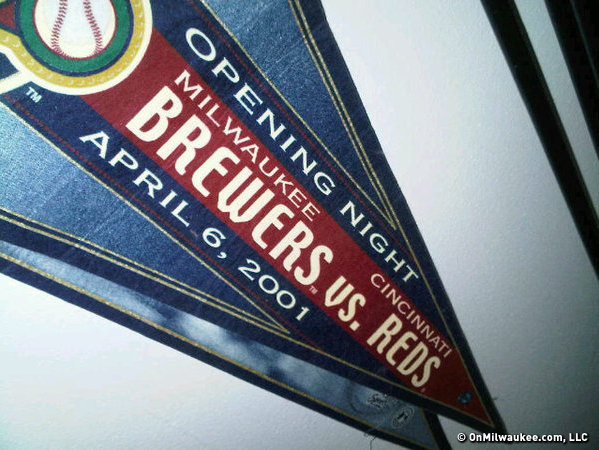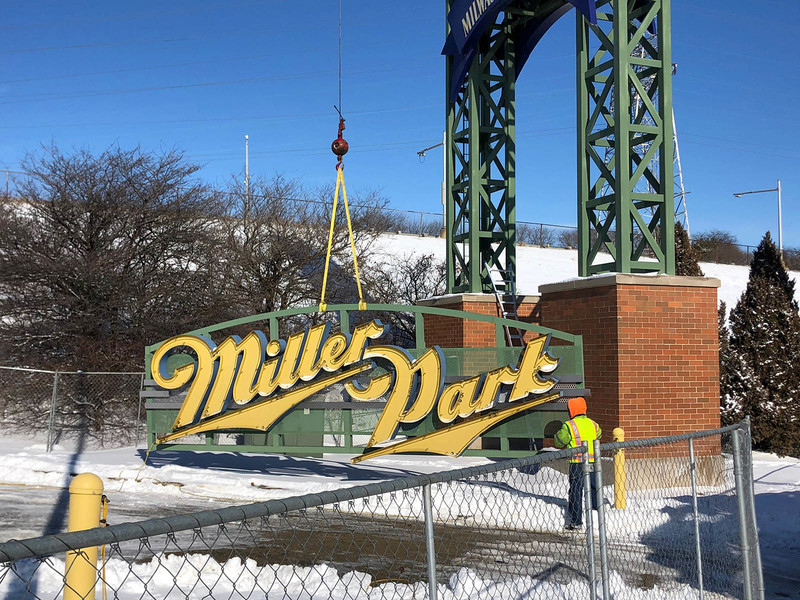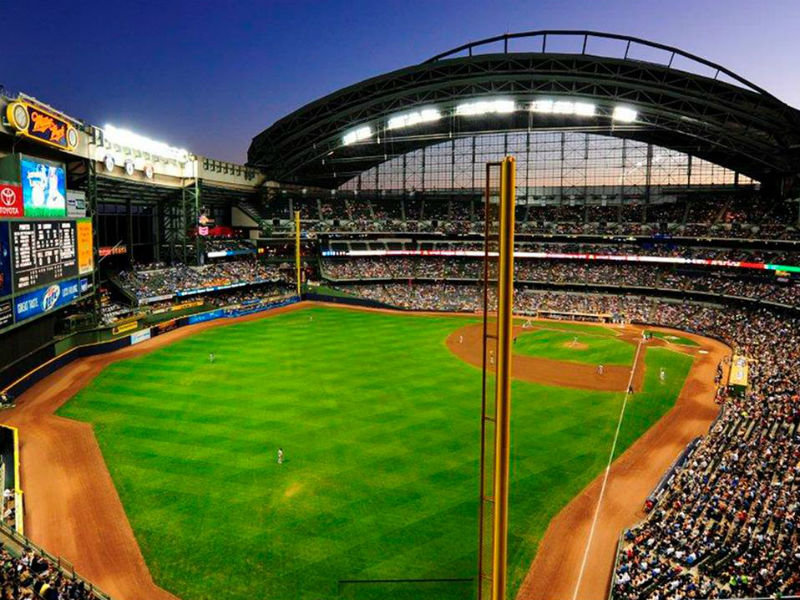Opening Day for baseball has always been a big party in Milwaukee, but never quite as much so as on April 6, 2001 when Miller Park celebrated its first home opener.
Much has changed in the 10 years since that notable event in Wisconsin baseball history. For the Milwaukee Brewers and state citizens, especially those of the five counties paying the tenth of a cent sales tax for Miller Park, we have watched the team initially struggle on the field, host an All-Star Game ending in an unprecedented tie, undergo major roof repairs, see a historic change in team ownership, a thrilling playoff run in 2008 and now a new manager with playoff expectations in 2011.
My perception of the last decade of baseball at Miller Park is somewhat unique. I was as close as could be to the ballpark as it was built, spending over four years of my life walking the construction site as Communications Manager for the Southeast Wisconsin Professional Baseball Park District, which was in charge of building Miller Park.
Since Miller Park opened, I have moved on to a similar job at Harley-Davidson, but keep close tabs on the ballpark attending numerous Brewer games and other events there.
I've been lucky enough to ride the Harley for the game ball presentation the last couple years and figure I'm in a select group of folks who have done that and run in the Sausage Race. I was the Brat, finished a distant second and it's not rigged.
I’ve also been fortunate to coach all three of my sons and their teammates in several games at Miller Park’s Helfaer Field youth ballpark, which was a mid-project addition that was well worth it.
As someone who spoke to the merits of Miller Park before groups of cynical and suspicious Stadium District taxpayers in the late 1990s, I've seen attitudes change dramatically since then. With a decade of baseball history under Miller Park's roof and open skies, it's hard to find even a shade of the opposition that once battled the Brewers and their ballpark.
Miller Park is now the only baseball experience known to a new generation of Brewers fans that includes our three boys who were ages 6, 4 and 2 in April 2001. They are now ages 16, 14 and 12 and know the confines of Miller Park as well as I knew those of County Stadium when I was a boy.
I conservatively estimate that I enjoyed more than 500 games at County Stadium from my first Brewers game in 1970 until the last one on Sept. 28, 2000. I now feel that Miller Park has become as comfortable and familiar to baseball fans as was County Stadium. However, there is no comparison when it comes to the overall baseball experience provided by the two ballparks.
One of our four major goals in building Miller Park was quality design, engineering and construction. Despite the hiccups of major roof repairs in 2006-07, it's hard to argue with the enjoyment and amenities at Miller Park with some 800 games and other events in the books. Benefits including open concourses with views of the field, wider seats and aisles with better views, additional restrooms and concessions, climate controls and a retractable roof that might be the best $50 million Milwaukee ever spent.
On the downside, concession and restroom lines, as well as parking congestion can still be problem with large crowds, but some of that might be unavoidable. We will now have a high tech new outfield scoreboard and replay board that likely won't be used on close calls. Sorry, but I think replay boards, like big screen TVs, can be overrated. A second replay board over the upper deck behind home plate would be a plus for fans in the cheaper bleacher seats.
Another benefit that has come to fruition is seeing local companies, contractors and workers (myself included), who received Miller Park experience and are still succeeding in the community. In particular, it helped those smaller local businesses owned by women, minorities or others that can often be disadvantaged.
I could not discuss my Miller Park experience without mention of the tragic crane collapse of July 14, 1999 and its aftermath. That event's imprint on Milwaukee's memory might have faded, but is far from forgotten. It is always one of the first topics asked about when I tell someone that I worked at Miller Park during its construction.
I sometimes think of the accident and the three men who died, and hope the joy of continued baseball in Milwaukee is somehow a small tribute to their memory.
From a financial standpoint, Miller Park was built within what should now be considered a reasonable $400 million budget (about two-thirds public funds) in terms of stadium construction. By comparison, the new Yankee Stadium cost about $1.3 billion with about $200 million in public costs.
It's now projected that the five-county Stadium sales tax (again, 0.1 percent) could end as late as 2018, which is about four years later than initially projected.
Another item that can still be debated is Miller Park's Menomonee Valley location over a downtown site. I maintain the stadium could have been built downtown if a viable plan was presented, but the Brewers and others obviously preferred the Valley.
Significant light industrial development now rising just east of Miller Park and into the Valley seems to be a somewhat underrated success for the city of Milwaukee.
The critical legacy of Miller Park 10 years after opening might just be the ownership transition of the Brewers to Mark Attanasio, the investor who bought the team from the Selig family in 2005.
Bud Selig's well-documented efforts and contributions to baseball in Milwaukee were appropriately commemorated when his statue was dedicated at Miller Park last year. His daughter Wendy has moved on to business and family endeavors in Arizona.
While she was instrumental in the Miller Park project as Brewers CEO, franchise fortunes fell on hard times during her tenure. It was then that Attanasio became an unlikely, yet highly successful and popular club owner in Milwaukee.
Whether Milwaukee's honeymoon with Attanasio continues in baseball's battle between big and small markets will likely determine the level of Miller Park's success in the next decade and beyond.







